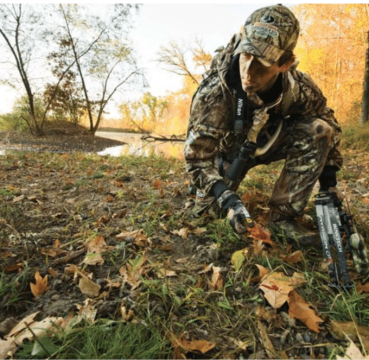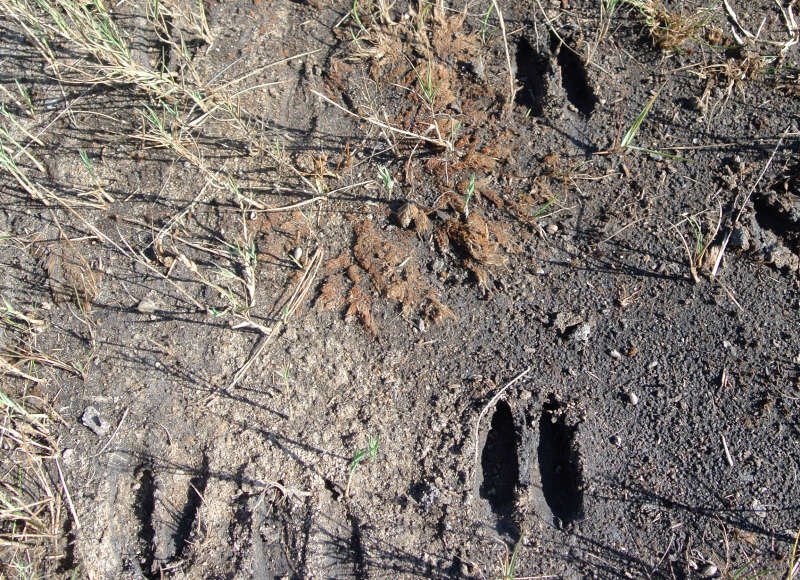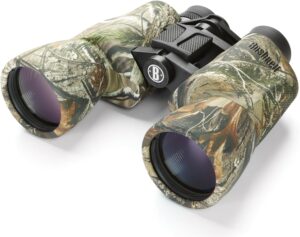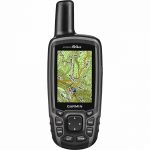Table Of Contents
Do you want to know what one of the most important hunting tips of all time is? Simple – you have to learn tracking deer and other animals you are hunting.
Having the proper hunting rifle and clothing is only part of it. You also need to learn how to track, both before and after you take the shot.
In this article, we’ll discuss the top tips for tracking deer in open country, how to track them after you’ve taken the shot, and basic tips on how to avoid getting lost.
Tracking Deer In Open Country
It is admittedly difficult to track deer and other wild game animals across open country, but it is also not impossible. We’ve all seen Western movies where a professional tracker kneeled down and examines the dirt, and is able to know the exact location that a person or animal took. The truth is that you can do the same if you develop proper tracking skills.
When traversing the woods or open country in search of wild game, take note of the ground as you walk. If you find any tracks, look to see if they can logically connect from one point to another, and then follow them.
You should also get a general idea of how old the tracks are. Simply press your hand or foot into the ground next to the track, and then compare the difference.
Additionally, you can look for other signs of animals besides their tracks. A fresh bed on the grass or snapped limbs are crystal clear signs that an animal has passed through recently.
Tracking After The Shot
Hit the deer and saw it sprint outta sight?
The Waiting Game
Hold your horses, partner! Depending on where you’ve hit the deer, it’s critical to wait a while before tracking. You see, a gut-shot deer could take hours to pass, while just fifteen to thirty minutes for a lung or heart shot. Too eager and you’d risk pushing the deer further off the trail. You gotta play it smart and patient, ‘coz that’s the name of the game!
It’s equally important that you know how to track an animal after you have taken a shot. If anything, there are more advantages to tracking an animal after it has been shot versus before.
For one thing, you know exactly where the animal was, so it’s easier to pick up on its trail. Furthermore, you have the ability to pick up on blood, hair, or intestinal matter that have been left behind as well.
The “Ground” Rules
Keep your eyes peeled on the ground, scanning for drops in the foliage, dirt, or rocks. But remember, blood ain’t your only clue. Broken branches, scattered leaves, or a well-trodden path can also give you the lead you need. Now don’t go in guns blazing. Move quietly, calmly, keeping your senses tuned to the surroundings. You’re in THEIR territory, after all!
Decoding The Blood Trail
You’ve taken the shot! The deer gets spooked and bolts, leaving you with a sense of victory, or maybe panic. This is where your tracking skills come into play. Your first point of reference is the blood trail. Now, this ain’t your run-of-the-mill detective gig! The color, consistency, and frequency of blood drops are your cryptic language to comprehend and trace the deer’s path. Bright, frothy blood with bubbles indicates a lung shot, a heart shot will have thick, dark blood that’s often copious, and pinkish blood with bits of tissues? Well, that’s a gut shot, amigo!
The color and location of the fallen blood is also a good indicator of how the animal was hit. When the blood is darker red, chances are good the animal was shot in the artery or liver, while a lighter red indicates that the deer was likely hit in the lungs.
When the blood is on the ground, chances are high there was a lower body hit. If you see blood on brush or tree limbs, it was mostly likely shot in the upper body. You may find there is blood in an animal track, it was likely shot either in the shoulder or in the back leg. When there is blood on either side of the tracks, the bullet likely struck the animal through the side and exited out the other. When the blood becomes hard to find, the animal is bled out and is likely held up somewhere in the general vicinity, and you can walk around in a large circle to find it.
While pursuing an animal that’s been hit, you need to be patient. Just because the game animal was shot does not mean it is going to die within the next half hour. It also doesn’t mean that the animal is incapable of running or walking for a mile or two further.
Gear Up or Go Home
When out in the wild trailing a shot deer, having the right gear separates the boys from the men! From optics like binoculars to spot the blood in a crowded forest, tracking lights for hunting in the dark, a good ole knife for when you need to muck in, to GPS devices for staying found; packing these can elevate your tracking game from amateur to ace!
Bushnell PowerView 10 x 50mm Binoculars
Primos Hunting Bloodhunter Blood Tracking Light
Don’t Get Lost
Finally, you have to be really careful that you don’t get lost when tracking a deer or other animals. It can be really easy to lose your sense of direction when you pursue the animal deep into the woods or your surrounding environment.
Basic tips you should take include informing your relatives of where you’ll be hunting and when you expect to be back, take note of natural landmarks as you walk, and consider setting signs as you go (such as small red flags on tree limbs) that you can then collect as you walk back to your home.
Investing in a GPS device is also critical for navigation. In fact, has there ever been a navigational tool more useful or powerful than the GPS? All you need to do is push a button and a satellite will show your position on a topographic screen, and you will know exactly where you are.
Finally, there are also a variety of hunting and tracking apps that you can invest in as well. These apps do things such as providing you with weather forecasts, providing you with topographic views, communicating with friends who are using the same app, allowing you to view your path so far so you can walk back directly the way you came, and so on. Take note that some of these apps do not even require an Internet connection, which is a major bonus.
Passing The Buck: Calling for A Backup*
Some may call it quitting. I call it, sharing the spirit of hunting. Two pairs of eyes are better than one when the going gets tough. A hunting companion can not only keep track of the wounded animal, but keep you in check too! Sure, it might take a tough guy to admit he needs help, but once that deer is found, you’ll be glad you got your buddy along!
Tracking A Deer FAQs
What are the basic signs that indicate a deer has passed through an area?
When tracking a deer, you can look for some common signs. One of the most obvious signs is their tracks. Deer tracks have two cleavages forming a heart-shaped mark. The size of the track can also vary depending on the age and sex of the deer.
Another sign is nibbled vegetation. Deer are browsers and will eat the leaves, twigs, and fruits of many plants. Look for irregular patches on the underside of plants or low hanging branches that may suggest a deer has fed there.
Thirdly, look for droppings. Deer droppings are usually small and oval-shaped. They can either be in small amounts, or you might find larger piles, indicating that the deer has been in the area for a while.
How can I determine the direction a deer has gone?
The direction of a deer’s travel is usually clear from the tracks it leaves behind. Deer tracks are heart-shaped with pointed ends. The pointed end of the track indicates the direction that the deer was moving. By following these tracks, you can trace a deer’s path.
How can I tell how recently a deer has passed through an area?
The freshness of the tracks or droppings can often give you an idea of when a deer may have passed through. Fresh droppings are generally darker and will glisten due to their moisture content. On the other hand, older droppings will have a faded color and appear dry. Similarly, fresh tracks will have prominent, well-defined edges. Over time, the edges of the track become smooth and less noticeable due to weather elements or other animals crossing over.
What is the best time to track deer?
Deer are primarily nocturnal creatures but are also most active during dawn and dusk, making these optimal times for tracking. However, if you are looking to find deer while they are inactive, tracking during the day when they are bedding down might prove to be the best.
Can weather conditions affect deer tracking?
Yes, weather conditions play a significant role in deer tracking. Rain can wash away tracks and droppings, making tracking difficult. Snow, on the other hand, can be of great help as it allows tracks to be easily seen. Additionally, the direction and strength of the wind are important when tracking deer as they have a keen sense of smell. It’s best to stay downwind of the deer to prevent them from picking up your scent.
FAQs for Tracking a Wounded Deer
How soon should I start tracking a wounded deer?
Ideally, you should wait for at least 30 minutes to an hour after shooting a deer before you start tracking. This gives the deer time to travel a reasonable distance and settle down. If you disturb it too soon, you may make tracking more difficult by causing the deer to run farther away.
What signs should I look for when tracking a wounded deer?
The most apparent sign of a wounded deer is a blood trail. Look out for blood spots on the ground, twigs, leaves, or grass. Other signs can include a disturbed travel path, marked by broken vegetation or an irregular rut. If the shot placement and circumstances allow it, you may also find hair, pieces of bone or even pieces of the arrow or bullet.
What does the color of the blood tell me about the wound?
The blood color can often indicate where the deer was wounded. Bright, frothy, red blood usually suggests a lung hit; darker blood can indicate a hit in the muscle, liver, or kidney. Green or brownish matter mixed with the blood might mean a gut-shot. These indications can help you adjust your tracking strategy.
How can I make tracking a deer easier?
Make sure to mark the last known location of the deer and any blood or signs you find along the way. This will help you locate the direction of the deer’s travel. Using a GPS or marking ribbon can be beneficial. Furthermore, keep as quiet as possible during the tracking process to avoid spooking the wounded deer even more.
What should I do if I lose the trail of a wounded deer?
If you lose the trail, it’s crucial not to panic or rush. Return to the last known sign or blood spot and begin carefully scanning the area in expanding circles around it. Look for hidden signs like broken twigs, scuffed leaves, or small blood drops. If you’re not successful and have to resume the search the next day, bring along helpers to cover more ground.
Tracking A Deer – Conclusion
In conclusion, when tracking deer and other animals it’s vitally important that you learn how to look for clues, both before and after the shot. Knowing the above information will be a good place for you to start.














